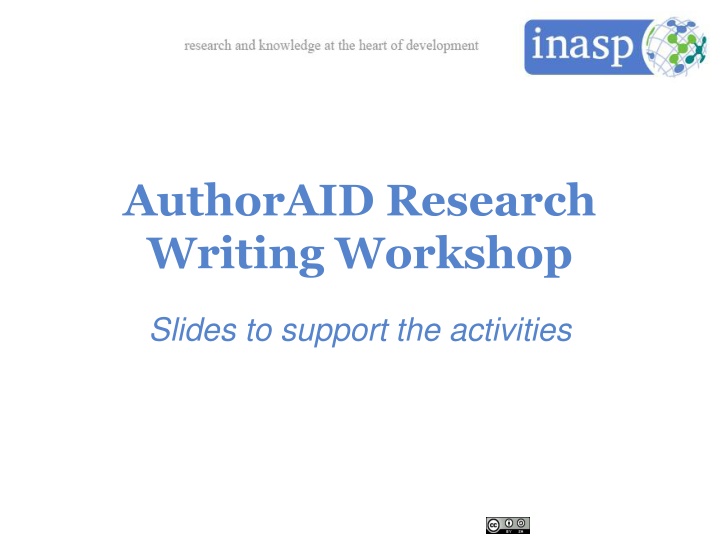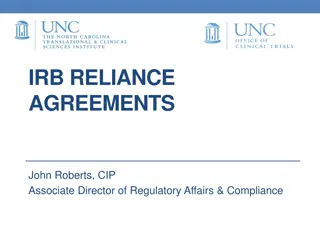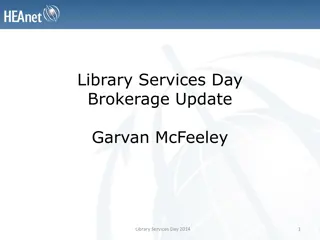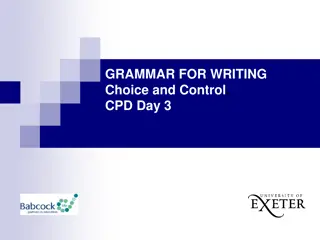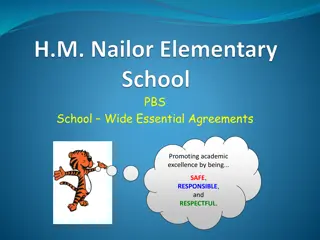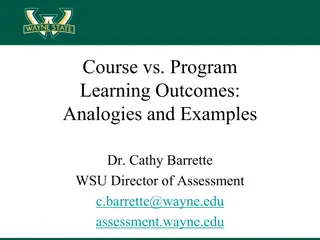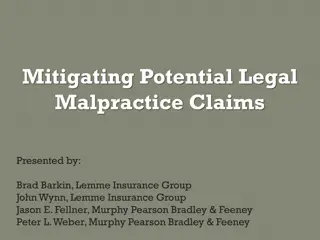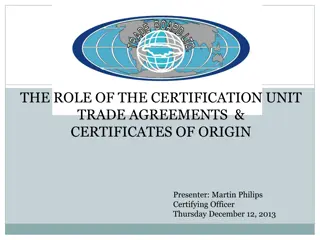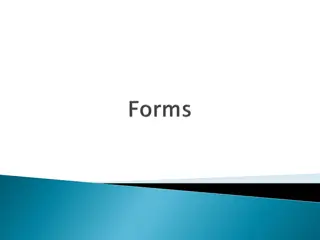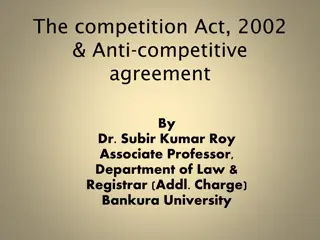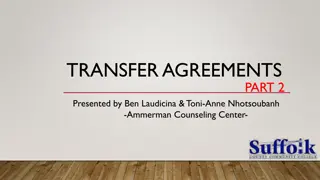AuthorAID Writing Workshop: Key Learning Outcomes & Agreements
In this workshop, participants will explore ethical issues, journal selection, paper structuring, and publication strategies. Active learning methods will enhance engagement, with a focus on meeting learning agreements such as active participation, time management, and reflective practices. Success as a research author will be defined through achieving workshop objectives and fostering a mindset of continuous improvement.
Download Presentation

Please find below an Image/Link to download the presentation.
The content on the website is provided AS IS for your information and personal use only. It may not be sold, licensed, or shared on other websites without obtaining consent from the author.If you encounter any issues during the download, it is possible that the publisher has removed the file from their server.
You are allowed to download the files provided on this website for personal or commercial use, subject to the condition that they are used lawfully. All files are the property of their respective owners.
The content on the website is provided AS IS for your information and personal use only. It may not be sold, licensed, or shared on other websites without obtaining consent from the author.
E N D
Presentation Transcript
AuthorAID Research Writing Workshop Slides to support the activities
Day 1 16/02/2025 2
Day 1, Session 1 (D1-S1) Introduction 16/02/2025 3
Intended learning outcomes By participating fully in this workshop, you will be able to Describe the key ethical issues in research and publishing Balance different factors to select an appropriate target journal for your research paper Define the focus and contribution of your paper Write a working title and abstract for your paper Develop the body of your paper using an appropriate structure and flow Formulate a strategy to achieve publication success 16/02/2025 4
Active learning We ll be using active learning approaches throughout the workshop What this means You take responsibility for your learning You decide what and how much you learn Trainers facilitate learning rather than teach in the traditional sense Expect a lot of activities! 16/02/2025 5
Learning agreement Do s Being present: Showing up on time every day and staying until it s time to leave Sticking to the time limit during break times Participating actively in all the sessions Keeping up the pace from one session to another (sometimes we may have to move on abruptly) Questioning instead of tuning out when you are confused or bored Informing your supervisor, family and others that you are at this workshop and why it s important Don ts Missing any sessions unless it s an emergency Taking phone calls, checking Facebook, WhatsApp etc. during sessions Doing other things on your laptop during sessions that involve computer work 16/02/2025 6
An introduction to the end-of-day reflection At the end of each workshop day, you ll be asked to jot down What you learnt today Questions you have Things that were unclear or difficult 16/02/2025 7
What does success as a research author look like to you? 16/02/2025 8
D1-S2 Fixed mindset and growth mindset 16/02/2025 9
Fixed vs growth mindset (derived from Dwecks work) Fixed mindset Growth mindset Challenges Avoid Embrace Obstacles Give up easily Persist in the face of setbacks Effort See effort as fruitless or worse See effort as the path to mastery Criticism Ignore useful negative feedback Learn from criticism Success of others Feel threatened by the success of others Find lessons and inspiration in the success of others Deterministic view of the world Greater sense of free will May 2017. DRAFT. 10
Part 1: Work with your group members to come up with at least one example or behaviour in a research authorship context for each point in (a) the fixed mindset column and (b) the growth mindset column. Part 2: One person from each group to present some of the examples they thought of 16/02/2025 11
D1-S3 Research and publishing ethics 16/02/2025 12
What do you know about research and publication ethics? Concepts, terminology, etc. Have you witnessed or heard of any ethical violations in doing or reporting research? Write the concepts and examples you ve come up with on sticky notes (use one big sticky note per concept/example) Stick your notes on the wall 16/02/2025 13
D1-S4 Defining the focus and contribution of your paper 16/02/2025 14
Pre-writing Writing a research manuscript is a project, not a simple task Useful to do some pre-writing before actually starting to write your manuscript To develop focus Gather key points to include in the paper Develop a rough outline Anything else? 16/02/2025 15
Pre-writing task today Write a short essay that clearly describes the focus of your research and the contribution of your research manuscript in advancing knowledge 300 to 400 words long Don t worry About the stage of your actual manuscript: Completed, work in progress, or hardly begun If your research is not yet complete; just write about what you ve done so far Further instructions in the participant handbook 16/02/2025 16
Assessment phase 1. Come up to the front and pick a chit at random to find out who you are going to assess and who will assess you 2. Email your essay to your assessor 3. Check your inbox for (1) the essay you ve been assigned to evaluate and (2) the assessment form from the facilitator 4. Use this form to evaluate the essay you ve received 5. Email the completed form to your peer and the facilitator 16/02/2025 17
D1-S5 Identifying appropriate target journals 16/02/2025 18
What are the characteristics that you would look for in a journal to decide whether it is suitable for your manuscript? 16/02/2025 19
Typical factors to consider Audience Prestige Access (open access / subscription) Potential impact Publication time Likelihood of acceptance 16/02/2025 20
Day 1 end-of-day reflection 16/02/2025 21
Share your thoughts What you learnt today (green sticky note) Questions you have (yellow sticky note) Things that were unclear or difficult (red sticky note) 16/02/2025 22
Day 2 16/02/2025 23
D2-S1 Identifying appropriate target journals 16/02/2025 24
Do you find it exciting to read and follow manuscript guidelines given by journals? 16/02/2025 25
Reading two sets of instructions Read and discuss each document in your group (10 min per document) Use green highlight for excerpts that contain interesting information Use yellow highlight for excerpts that are unclear or confusing information Make notes with your reasoning or comments on the excerpts you ve highlighted Think about the similarities and differences between the two sets of instructions Share your thoughts with the whole group (5 min per group) 16/02/2025 26
Why should you read manuscript guidelines before you start writing your paper? 16/02/2025 27
Some reasons To note guidelines concerning the doing of research (such as ethical clearance) To make sure that the kind of article you plan to write is suitable for the journal To look up any recommended style manuals To learn about the expected structure and length of the article To start writing your paper with any template provided or with the formatting expected this will save you time later 16/02/2025 28
D2-S2 Structure of a typical scientific journal article 16/02/2025 29
IMRAD 16/02/2025 30
Introduction: What is the problem and why is it a problem? Methods: What did you do to solve the problem? Results: What did you find? Discussion: What do your findings mean? 16/02/2025 31
Identify a problem / issue / challenge related to your everyday life Think of how you could solve it (or have solved it) using the IMRAD approach Write the problem on a yellow sheet Document key IMRAD points on 4 green sheets, clearly labelled as Introduction , Methods , Results , Discussion Lay them out on your table once you are done 16/02/2025 32
Day 2 end-of-day reflection 16/02/2025 33
Share your thoughts What you learnt today (green sticky note) Questions you have (yellow sticky note) Things that were unclear or difficult (red sticky note) 16/02/2025 34
Day 3 16/02/2025 35
D3-S1 Citations and references 16/02/2025 36
Discuss in pairs (10 min) What functions do references serve in research writing? 16/02/2025 37
Some functions of references To give credit to others for their work To add credibility to your work by showing that you used valid information sources To help show how your work is related to previous work To help readers find further information 16/02/2025 38
Group activity (15 min) Make a checklist of things to do when including references and in-text citations in your paper 16/02/2025 39
D3-S2 The methods section of a research paper 16/02/2025 40
Discuss in pairs (10 min) What purpose does the methods section serve in research writing? 16/02/2025 41
Purpose of the methods section To allow others to replicate what you did In order to test it In order to do further research To allow others to evaluate what you did To determine whether the conclusions seem valid To determine whether the findings seem applicable to other situations
Documenting directions (15 min) A visitor wants to know how to get to this room from the entrance of the building. Work in your group to document the path from the entrance to this room in as much detail as you prefer. Write it down on a sheet of paper. Please be back in this room within 15 minutes with your sheet of paper ready. 16/02/2025 43
Check a methods section for completeness Look at the excerpt of a methods section you have been given Try to identify the places that have missing, vague or incomplete information 16/02/2025 44
D3-S3 The introduction section of a research paper 16/02/2025 45
Discuss in pairs (10 min) What purpose does the introduction section serve in research writing? 16/02/2025 46
Purposes of the introduction section To provide background In order to help readers understand the paper In order to help readers appreciate the importance of the research To identify the question(s) the research addressed Sometimes stated as a hypothesis or hypotheses
Activity Order the elements of the introduction section 16/02/2025 48
Typical structure of the introduction 1. Information on importance of topic 2. Highlights of relevant previous research 3. Identification of unanswered question(s) 4. Approach you used to seek the answer(s)
Shape of the introduction? Funnel Cone Hourglass Images obtained from Wikimedia Commons (https://commons.wikimedia.org; CC-BY-SA) 16/02/2025 50
